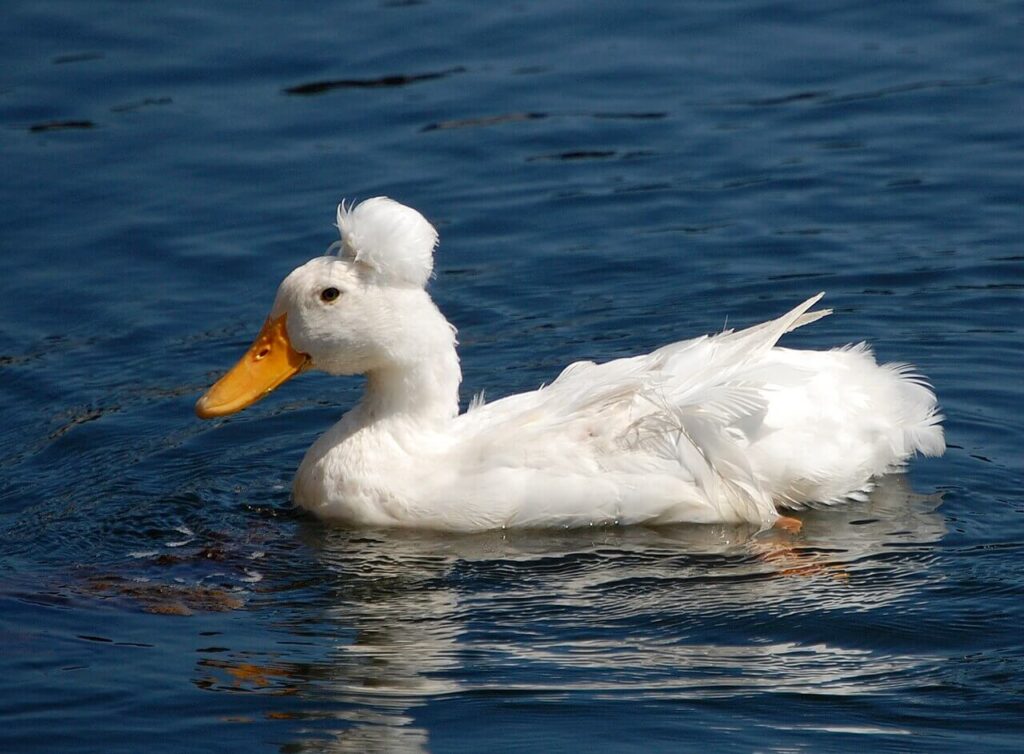Crested Duck

Scientific Name
Anas platyrhynchos domesticus
Alternative Names
Crested Domestic Duck, Crested Mallard
Measurements
| Feature | Male | Female |
|---|---|---|
| Length | About 50–60 cm (20–24 in) | About 45–55 cm (18–22 in) |
| Weight | 2.5–3.2 kg (5.5–7 lb) | 2–2.7 kg (4.4–6 lb) |
| Wingspan | 80–90 cm (31–35 in) | 80–90 cm (31–35 in) |
Status
A domestic breed believed to have originated from the East Indies and later developed in Holland. Recognized in both the United States and the United Kingdom, with black and white color varieties being the most common.
Identification
A medium-sized duck easily recognized by the fluffy crest of feathers on its head, which can range from small to a large rounded tuft about 13 cm wide. The breed comes in many colors, including white, black, and grey. Apart from the crest, it looks much like an ordinary domestic duck.
Voice
Typical of domestic ducks — soft quacks, often more vocal when in groups or during feeding.
Diet
Omnivorous, feeding on grains, aquatic plants, insects, and small invertebrates. When kept domestically, they thrive on standard duck feed and greens.
Distribution
Originated from ducks brought from the East Indies to Europe by Dutch traders. Now found worldwide in domestic and ornamental flocks.
Habitat
Prefers calm ponds, farmyards, and gardens with access to clean water. Well adapted to life in captivity and ornamental ponds.
Breeding
Crested ducks carry a dominant gene responsible for the tuft, but when two crested birds are bred, some ducklings may not survive due to genetic complications. Usually, about one-third of ducklings hatch with crests.
Wintering
Non-migratory and comfortable in temperate climates when provided with shelter and water that doesn’t freeze.
Use
Raised mainly for ornamental purposes and exhibitions but also kept for eggs and meat. Their eggs may be white, blue, or greenish.
Conservation
Not a wild species and therefore not under conservation programs. However, care in breeding is encouraged to reduce health issues linked to the crest gene, such as skull deformities and coordination problems.
